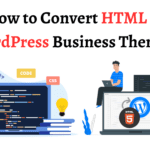
Video advertising is easily the most effective form of advertising you can invest in. As a versatile, audiovisual medium, it’s the perfect way to help you connect with audiences and promote your product or service. A massive 54% of customers are demanding more video content from brands they support.
Advertisers have a range of options with which to make this happen. Given the plethora of platforms, ad networks, and publishers out there, brands can now choose what kind of video ad would work best for their needs.
Read on to learn more about various ad types and 2023 video marketing ad trends to effectively promote your brand.
Advantages of Using Video Ads
There are nearly 3.5 billion digital video viewers worldwide. Americans alone spend an average of 323 minutes per week watching video content. By running video ads, you’re engaging with your audience in the way they’re most comfortable. Here’s everything video ads can do for your company:
- Greater reach
- Contextual targeting of customers
- Mobile-friendly medium
- Increased ad watch-time
- Improved brand awareness and recall
- Increased video shares
- Higher ad click-throughs
- Increased leads
- Improved sales
- Better return on investment (ROI)
- Improved SEO
- Greater creative freedom
- Increased trust and credibility
Types of Video Ads
Different types of ads have different strengths and can help your campaign in different ways. Here are some of the most popular ad formats available to you:
In-Stream Ads
As the name suggests, in-stream ads display in your video player as you’re streaming content. Some of the most popular platforms for in-stream ads include YouTube, Dailymotion, Vimeo, and Youku, however, these could appear on any website with embedded video players.
These are also called linear ads since they play during a video stream and are often contextual to the video being streamed. In-stream ads are typically the most popular ones around since they’re shown to a captive audience that has tuned in to watch the content.
There are three types of in-stream ads:
- Skippable ads: Skippable ads play before, during, or after a video. The viewer has the option to skip these after a short time. The standard minimum is five seconds, such as on Facebook and YouTube. Skippable ads are great for promoting products or services that don’t need a lot of exposition.
They’re also ideal when you’re working on a budget. On YouTube, you’re only charged if a viewer watches 30 seconds, watches the entirety of the ad, or interacts with the ad, whichever comes first.
- Non-Skippable ads: Viewers have to watch the entirety of a non-skippable ad to access the video that plays after it. These can be placed before, during, or after a video. Use non-skippable ads when you’d like your audience to view the entire message, especially if you’re explaining a new concept. As an advertiser, you pay for these based on the number of impressions.
- Bumper ads: Bumper ads are similar to non-skippable ads in that viewers have to watch the entirety of the ad. However, these are usually six seconds or shorter and can be placed anywhere throughout the video. Bumper ads are perfect to deliver short, memorable messages to a broad target audience. You pay for these based on impressions as well.
Depending on whether you place in-stream ads before, in the middle, or after a video, they’re ideal for increasing brand awareness, contextually promoting a relevant product, or directing viewers to a purchase or landing page with a CTA, respectively.
Native Ads
Also called out-stream ads, these can be shown to viewers irrespective of whether they’re browsing video or non-video content. These can be displayed on fixed or dynamic ad units on a webpage.
Native ads can be placed in the middle of an article, in a sidebar alongside the content, or anywhere else publishers choose to feature ad units. They’re an excellent tool to improve brand awareness and reach, especially for mobile users. As an advertiser, you’re charged for native ads on a per-thousand-impression basis.
Interactive Ads
Interactive video ads are great to promote active user engagement with your advertisement. A popular application for these is for in-video purchases, such as in the middle of an influencer livestream endorsing a certain product or service. Interactive ads also appear often on mobile game apps, to enable in-game transactions or contextual promotions.

Non-Linear Ads
These play alongside the video content without any interruption. Interacting with a non-linear ad typically causes the video to pause. There are two types of non-linear ads:
- Overlay ads: These run on top of the video, covering about 10-20% of the bottom of the video. They’re great for catching user attention, but may also obstruct parts of the video, such as captions or subtitles.
- Non-Overlay ads: Here, the ad units are integrated with the video player so that the ad runs alongside the video without obstructing it. Unlike in-stream ads, you can view these and the video side-by-side.
Masthead Ads
Masthead ads play on a website’s masthead — the header area of a webpage. Depending on the ad unit on the website, these can appear in widescreen, 16:9, or any other aspect ratio. Masthead ads often autoplay are significantly more expensive than other ad types since they arrest viewer attention at the top of the page.
Choosing the right type of ad can make a huge difference to your ROI for that campaign. Whether you’re buying inventory on an ad network or engaging with individual publishers, it’s worth doing some research and looking at previews to get a sense of the user experience for potential viewers. With the right approach, video advertising can help you widen your reach, boost sales, and grow your business.
Author Bio:
Tiffany Young can usually be found watching her favorite Twitch streamers, playing Breath of the Wild, or binging the latest Netflix original. She enjoys writing about everything from vintage vinyls to nerdy collectibles.









